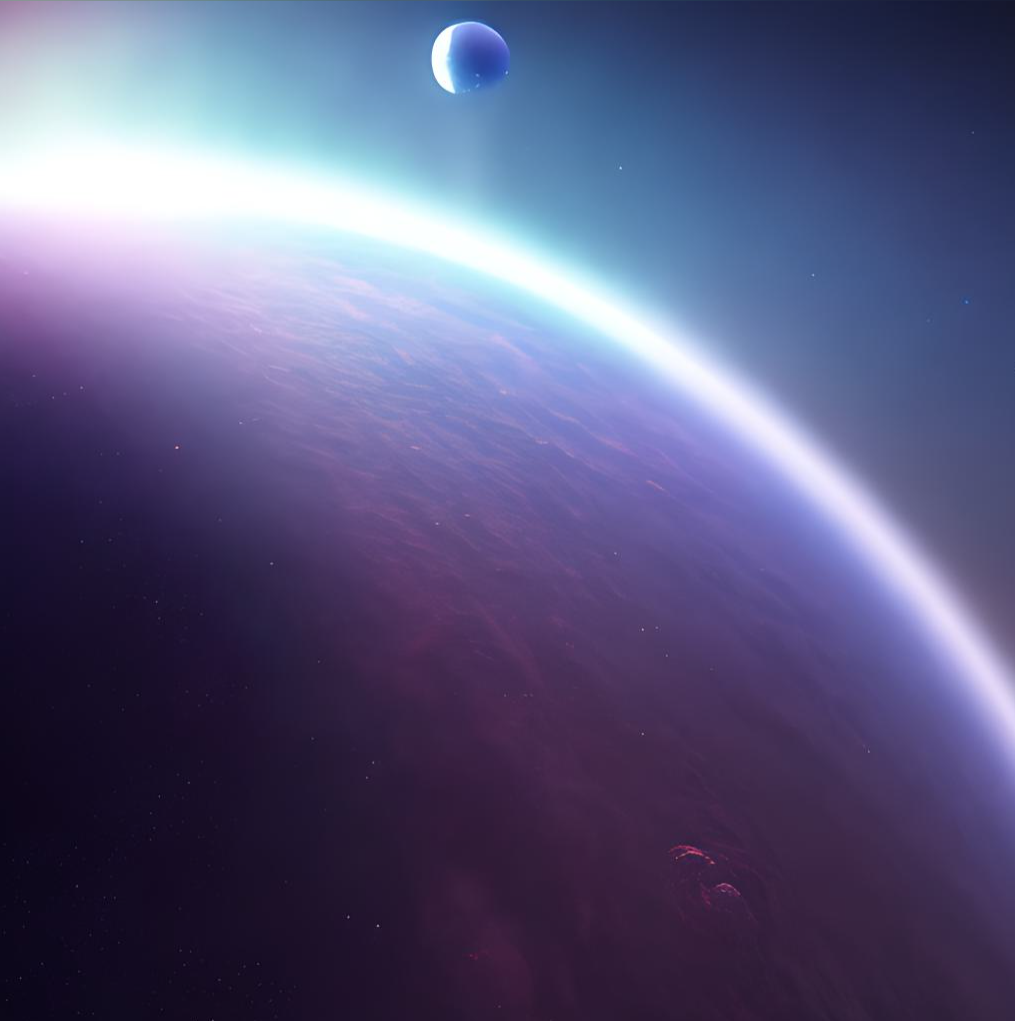What lies beyond the orbit of Pluto? Is there a ninth planet lurking in the outermost reaches of our solar system? These are the questions that have captivated scientists and astronomers in recent years as they explore the possibility of a “Mysterious world”. What evidence supports the existence of this planet? How could its discovery shed light on the formation and evolution of our solar system? With every new discovery, we inch closer to unraveling the secrets of our cosmic origins. Join us on a journey of exploration as we seek answers to these intriguing questions and uncover the mysteries of Planet 9.
An overview of the Planet 9

In recent years, scientists have become interested in the idea that there might be a ninth planet located in the outermost parts of our solar system. They hypothesise that “Planet 9”, also known as “Planet X,” is a giant planet similar in size to Neptune or Uranus and located well beyond the orbit of Pluto.
Scientists infer the existence of planet Nine from its gravitational effects on other objects in the outer solar system. However, scientists have made predictions and simulations of what the planet could potentially look like based on its estimated size and distance from the sun. Some of these simulations depict Planet nine as a large, icy world with a highly elliptical orbit around the sun.
The hypothesis proposed by Batygin and Brown and the emergence of Planet 9
In 2014, astronomers Konstantin Batygin and Mike Brown from the California Institute of Technology published a study suggesting that the presence of a massive, unseen planet could explain the unusual orbits of several distant objects in our solar system, giving rise to the idea of a “planet nine.” These objects, including Sedna and 2012 VP113, orbit beyond Neptune’s orbit and are known as “trans-Neptunian objects.”
Planet 9, according to Batygin and Brown’s estimates, would be around ten times the mass of Earth and would orbit the Sun in between 10,000 and 20,000 years. Scientists expect that the planet’s orbit will change significantly compared to the other planets’ orbits. The planet will most likely be located about 20 times further away from the Sun than Neptune, and its orbit will be much more inclined.

Studies and supporting data for the existence of Planet 9
Since the publication of Batygin and Brown’s paper, numerous other researchers have attempted to find evidence for the existence of Planet nine. Some have searched for the planet itself using telescopes, while others have looked for its gravitational influence on other objects in the solar system. So far, no one has made direct observations of Planet 9, but there have been some tantalizing hints.
Experts assume that Planet Nine’s gravitational influence causes the grouping of a collection of objects in the Kuiper Belt, an area of ice things beyond Neptune’s orbit, which is one of the most fascinating pieces of evidence. These objects are known as “extreme trans-Neptunian objects” (ETNOs), and they have extraordinarily extended orbits that are all concentrated around the same plane
Another line of evidence comes from the study of the orbits of objects in the distant Oort Cloud, a region of icy bodies that extends far beyond the Kuiper Belt. In 2019, researchers noticed that the orbits of some of these objects suggested the gravitational influence of a large, distant planet was responsible for this clustering.
Challenges and Significance in the Search for This Planet

Although these tantalising hints exist, the search for Planet Nine still has a long way to go, and many questions require answers. Current telescopes face a challenge in detecting Planet 9 as it is believed to be very faint and distant. Furthermore, there are several alternative explanations for the unusual orbits of trans-Neptunian objects, and some of the evidence for Planet Nine might be explicable by other factors.
Despite that, the exploration for Planet 9 is a fascinating and significant field of study that could have implications for our comprehension of the creation and progression of our solar system. If indeed Planet nine is present, it could offer valuable information into the initial development of the solar system, and its detection would be a significant achievement in our continuous investigation of the universe.
A Captivating Journey of Mystery and Exploration

In conclusion, the search for Planet 9 is a captivating journey that continues to mystify scientists and astronomers. There is no direct evidence that the planet exists, but the discovery of ETNOs and the clustering of objects in the Oort Cloud provide exciting hints that keep researchers motivated. Despite the challenges posed by the planet’s faintness and distance, the search for Planet nine remains a significant field of study that could offer valuable insights into the early development of our solar system. The pursuit of understanding the celestial puzzle of our solar system is a worthwhile endeavor that will undoubtedly lead to new discoveries and expand our understanding of the universe, whether or not we ultimately discover Planet 9.
If you want to gain further knowledge about it, you can purchase the recommended book

1 Comment